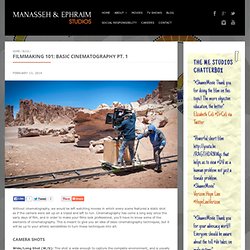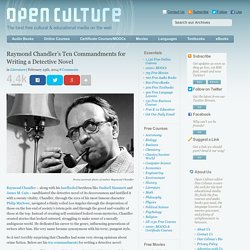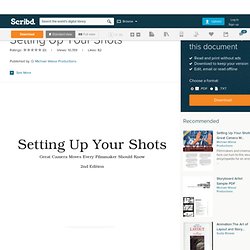

How To Unleash Your Inner Superpower–Story. As filmmakers we can get so tied up in telling the stories of others that we often forget to tell our own.

The cobbler’s children have no shoes, right? On our website, when we meet clients, when we enter into a pitch for a big job–these are all times where story can undoubtably connect in a deeper way, yet we often give these stories the time and care they desire. When I was invited to give a Tedx talk in nearby Salem, I wanted it to be something that could help the audience (who are not filmmakers) better understand story and how to be empowered by it. And so that brought me to two concepts that are both seemingly simple, yet rather complex. Two things that can truly help you tell stories that engage and connect. Elmore Leonard on Writing. Alfred Hitchcock long interview - with François Truffraut : pamstv. <div style="padding:5px; font-size:80%; width:300px; background-color:white; margin-left:auto; margin-right:auto; border:1px dashed gray;"> Internet Archive's<!

--'--> in-browser audio player requires JavaScript to be enabled. It appears your browser does not have it turned on. Please see your browser settings for this feature. </div> hitchcock inteview 01 hitchcock inteview 02 hitchcock inteview 03 hitchcock inteview 04 hitchcock inteview 05. Filmmaking 101: Basic Cinematography Pt. 1 - Manasseh & Ephraim Studios. Without cinematography, we would be left watching movies in which every scene featured a static shot as if the camera were set up on a tripod and left to run.

Cinematography has come a long way since the early days of film, and in order to make your films look professional, you’ll have to know some of the elements of cinematography. This is meant to give you an idea of basic cinematography techniques, but it will be up to your artistic sensibilities to turn these techniques into art. Camera Shots Wide/Long Shot (W/S): This shot is wide enough to capture the complete environment, and is usually used to establish a scene, including the spacial relationships and scenery or location. The wide shot can also be an extreme wide shot in order to show the scope of a landscape, for example a huge desert expanse. Mid Shot (M/S): The mid shot is the most popular shot in movie-making, and includes the subject and a little bit of the environment around it.
Camera Angles. TEDxMiddlebury - Phil Kaye - Why We Tell Stories. The mystery of storytelling: Julian Friedmann at TEDxEaling. Www.youtube.com/watch?v=KxDwieKpawg. Raymond Chandler’s Ten Commandments for Writing a Detective Novel. Promo portrait photo of author Raymond Chandler Raymond Chandler – along with his hardboiled brethren like Dashiell Hammett and James M.

Cain – sandblasted the detective novel of its decorousness and instilled it with a sweaty vitality. Chandler, through the eyes of his most famous character Philip Marlowe, navigated a thinly veiled Los Angeles through the desperation of those on the low end of society’s totem pole and through the greed and venality of those at the top. Instead of creating self-contained locked room mysteries, Chandler created stories that looked outward, struggling to make sense of a morally ambiguous world. He dedicated his career to the genre, influencing generations of writers after him. So it isn’t terribly surprising that Chandler had some very strong opinions about crime fiction. These commandments are oblique jabs at the locked room whodunits popular during the Golden Age of the detective novel during the 1920s and 30s. Bremen. Fiction in any form has always intended to be realistic.

Old-fashioned novels which now seem stilted and artificial to the point of burlesque did not appear that way to the people who first read them. Writers like Fielding and Smollett could seem realistic in the modern sense because they dealt largely with uninhibited characters, many of whom were about two jumps ahead of the police, but Jane Austen’s chronicles of highly inhibited people against a background of rural gentility seem real enough psychologically. There is plenty of that kind of social and emotional hypocrisy around today. Add to it a liberal dose of intellectual pretentiousness and you get the tone of the book page in your daily paper and the earnest and fatuous atmosphere breathed by discussion groups in little clubs. The detective story for a variety of reasons can seldom be promoted. Yet the detective story, even in its most conventional form, is difficult to write well. 1. 2. 3. 4. 5. 6. 7.
November 2009. I gave a talk at work the other day about staging.

It seems like I always end up giving talks about staging and yet I find it's always a hard thing to talk about. I've never heard anyone else give a talk about staging so I have nothing to compare my talks to. I'm constantly re-writing my talks based on how confused the listeners look at each point of my talk, to try and find the right information and the best way to explain it. I think one thing that was successful this time around was the following handout on really basic staging principles. F R A M E F I L T E R. Setting Up Your Shots. Contents vii Draw In ..................................................................................................................

Draw Out ...............................................................................................................